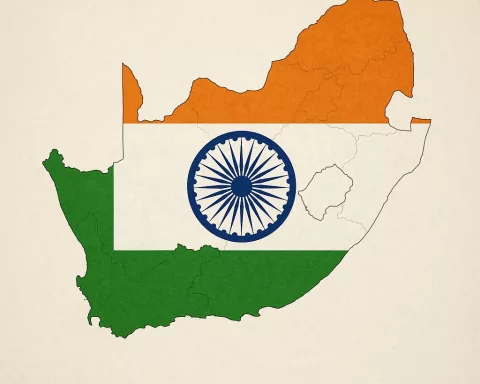In the Western Cape, paying vehicle licence fees is more than just a routine task—it helps keep roads smooth, safe, and ready for everyone. These fees fund road repairs and upgrades that support farmers, tourists, and daily commuters alike, making life easier and boosting the local economy. The government listens to residents’ ideas before changing fees, turning road funding into a shared effort that connects communities and builds a better future. Roads here aren’t just paths; they’re a symbol of teamwork and hope for what’s ahead.
What is the role of vehicle licence fees in the Western Cape?
Vehicle licence fees in the Western Cape fund road maintenance, upgrades, and safety improvements. They support economic activities like agriculture and tourism, promote community welfare, and encourage public participation in policy decisions—ensuring roads remain reliable, efficient, and a shared investment for the province’s future.
The Living Network of the Western Cape
In South Africa’s Western Cape, the process of renewing a vehicle licence goes beyond a simple administrative task. It becomes part of the vibrant civic rhythm that defines the province. The Western Cape Government’s recent call for input on proposed increases to motor vehicle licence (MVL) fees highlights more than a policy update. Instead, it extends an invitation to residents to influence the future of their roads. The announcement, published in the Provincial Gazette Extraordinary 9057 and reported by local media including Cape {town} Etc, puts a spotlight on an ever-present challenge: striking the right balance between fiscal stewardship and community involvement.
With over two million registered vehicles, the Western Cape distinguishes itself as a hub of movement and productivity. Each day, cars, trucks, and buses crisscross both scenic coastlines and busy city streets, mapping the province’s economic heartbeat. In this region, roads represent more than lines on a map—they form a living system, maintained with visible care and pride. The Western Cape’s infrastructure recalls the iconic cityscapes of 1920s New York or the grand boulevards of Paris, where urban design took on the character of art.
The province’s well-maintained roads stand as a point of pride, not simply the result of fortune but of deliberate planning. The Western Cape channels revenue from MVL fees directly into road upkeep, expansion, and upgrades. Muneera Allie, from the Western Cape Mobility Department, describes licence payments as essential contributions to community welfare. She reminds residents that these fees help keep roads safe, reliable, and efficient—a modern reflection of the social contract, where everyone has a stake in shared prosperity.
Roads as Connectors: History and Impact
The connection between individual action and collective benefit has long roots in the Western Cape. During the twentieth century, rural communities often pooled funds or volunteered labor to build and maintain local roads. While today’s system operates on a larger and more formal scale, it still draws on this tradition of shared responsibility. In this context, roads become more than physical structures; they serve as lifelines for commerce, vehicles for education, and links between communities.
Analysts often point to road quality as a measure of economic vitality. In the Western Cape, a clear policy ensures that MVL fees support not only private travel but also vital industries such as agriculture and tourism. Citrus farmers rely on dependable highways to ship produce, while tourists cruise the coastline in search of adventure. Well-maintained roads not only generate jobs but also improve standards of living, both in urban centres and far-flung towns.
The public’s voice plays a decisive role in shaping road policy. Rather than unilaterally imposing fee hikes, the Western Cape Government invites residents to share their thoughts. Feedback can be submitted electronically, by mail, or in person at the Mobility Department’s central offices. Draft regulations are available for review, and officials promise to consider all submissions. This transparent approach reflects the participatory ethos at the heart of post-apartheid democracy, where public involvement remains central to policy-making.
Funding Roads: Lessons from Here and Abroad
South Africa’s experience with road funding has evolved significantly over the decades. In the 1950s, a patchwork of national grants and local taxes financed construction and maintenance. Today, provinces like the Western Cape have refined the process, often modeling their practices after international examples. The earmarking of gas taxes in the United States or congestion fees in London offer lessons in how to ensure that infrastructure revenue stays dedicated to its intended purpose. By ring-fencing MVL fees, the Western Cape minimizes the risk of funds being diverted to unrelated expenses.
Experts such as Lewis Mumford and Jane Jacobs have argued that infrastructure shapes society as much as it supports it. In the Western Cape, smooth roads shrink distances and unite communities, enabling schoolchildren to reach class and entrepreneurs to bring goods to market. The benefits extend far beyond faster commutes; they foster cohesion, opportunity, and a sense of shared destiny.
Real-life stories bring these policies to life. A vineyard owner near Stellenbosch recalls a time when crumbling roads made getting products to market a gamble. Today, timely maintenance ensures that her deliveries—and visitors—arrive without a hitch. For minibus drivers in sprawling townships, improved road conditions mean safer journeys and more reliable livelihoods. These personal accounts reveal the everyday realities behind government decisions, showing how infrastructure investment directly shapes daily life.
Civic Participation and the Value of Investment
The Western Cape’s approach has caught the attention of experts worldwide. Urban planners and engineers from abroad have studied the province’s methods, hoping to replicate its successes elsewhere. Delegations have toured the region to learn about road maintenance and project management, while some have even suggested that other provinces adopt similar funding models to address their own infrastructure challenges.
Public engagement drives the current conversation about MVL fee increases. Whether individuals own a single car or manage an entire fleet, everyone has the chance to participate. The government’s willingness to listen, rather than dictate, underscores a commitment to responsive, inclusive governance—a tradition that recalls the democratic spirit of ancient civic forums.
At the same time, rising costs remain a concern. Inflation, fluctuating exchange rates, and rapid urban growth put strain on existing financial resources. The Western Cape’s policy of linking fee revenue directly to road upkeep offers a buffer against economic uncertainty. This pragmatic approach echoes design philosophies where every resource serves a distinct, necessary purpose.
The province’s roadways accomplish more than facilitating commerce or daily routines. They open up new possibilities for exploration and connection, inviting travelers to discover the Overberg’s rolling hills or the dramatic vistas of Chapman’s Peak. For artists, cyclists, and adventurers, the road itself becomes a symbol of progress and creativity—a testament to the power of careful planning and communal effort.
Weighing Costs and Benefits: A Shared Investment
The proposed MVL fee increases bring practical and emotional considerations. For many, higher fees may present a burden, especially during challenging economic times. Policymakers face the task of communicating the long-term benefits that come from today’s investments—framing the MVL not as a mere tax, but as a form of shared commitment to the province’s future.
Comparisons with other South African regions underscore the importance of dedicated, stable road funding. The Western Cape’s proactive management stands out starkly against provinces where maintenance has lapsed and road quality has suffered. The difference becomes clear at the borders: infrastructure policy has tangible, visible consequences.
Travelers often describe the Western Cape’s roadscapes in vivid terms. Early morning light gleams along the Garden Route, coastal highways beckon with opportunity, and remote farm roads connect communities that once felt isolated. These thoroughfares support the ambitions of entrepreneurs, artists, and farmers alike, making the region’s prosperity a truly collective achievement.
In the end, the debate over MVL fee increases transcends simple budget planning. It invites residents to consider their part in maintaining the province’s shared legacy. Paying a licence fee, though routine, becomes an act of citizenship—an investment in journeys yet to be taken, and in the connections that bind a diverse society.
Through meaningful participation and open dialogue, the Western Cape continues to nurture its democratic values. By sharing their views and priorities, residents help shape not just the roads they travel, but also the evolving story of their province. In this way, the region’s roads become a living testament to collective vision and responsibility, maintained by the hands and choices of its people.
FAQ: Vehicle Licence Fees and Road Funding in the Western Cape
1. What are vehicle licence fees used for in the Western Cape?
Vehicle licence fees in the Western Cape are primarily used to fund road maintenance, repairs, upgrades, and safety improvements. These funds support crucial economic activities such as agriculture and tourism, ensure safe and reliable travel for commuters and public transport, and contribute to community welfare. The fees help keep roads smooth and efficient, benefiting everyone from farmers shipping produce to tourists exploring the region.
2. How does the Western Cape Government involve residents in decisions about vehicle licence fees?
The Western Cape Government actively invites residents to participate in policy decisions regarding vehicle licence fees. When proposing changes, such as fee increases, the government publishes draft regulations and encourages feedback via electronic submissions, mail, or in-person visits to the Mobility Department. This transparent, participatory process reflects the province’s commitment to inclusive governance and public involvement in shaping the future of its infrastructure.
3. Why is road quality important for the Western Cape’s economy and communities?
Road quality directly impacts economic vitality and community well-being in the Western Cape. Well-maintained roads enable efficient transportation of goods—like citrus fruit from farms—and support the tourism industry by providing safe and scenic travel routes. They also facilitate daily commuting, access to education, and emergency services. Good roads create jobs, improve living standards, and help connect urban centers with rural areas, fostering social and economic cohesion.
4. How does the Western Cape ensure that vehicle licence fee revenue is used effectively?
The Western Cape government “ring-fences” or earmarks vehicle licence fee revenue specifically for road-related expenses, minimizing the risk of funds being diverted to unrelated uses. This focused allocation ensures that all collected fees contribute directly to maintaining, upgrading, and expanding the province’s road infrastructure, supporting long-term fiscal responsibility and efficient resource management.
5. How do vehicle licence fees in the Western Cape compare to other regions in South Africa?
Compared to other South African provinces, the Western Cape is known for its proactive and stable management of road funding through vehicle licence fees. While some regions struggle with inconsistent maintenance and deteriorating infrastructure due to funding shortfalls, the Western Cape’s dedicated approach results in better road quality, safer travel conditions, and stronger economic support. This difference is noticeable at provincial borders and has earned the region recognition from urban planners and government officials both locally and internationally.
6. What are some challenges and future considerations regarding vehicle licence fees in the Western Cape?
Challenges include rising costs due to inflation, urban growth, and fluctuating exchange rates, all of which put pressure on available financial resources. Policymakers must balance the need to maintain and improve roads with concerns about the affordability of fee increases for residents. Future considerations involve maintaining transparent public engagement, ensuring fees reflect actual infrastructure needs, and continuing to build on the province’s tradition of shared responsibility and community investment in road development.
If you’d like to learn more about renewing your vehicle licence or upcoming public consultations, you can visit the Western Cape Mobility Department website.








